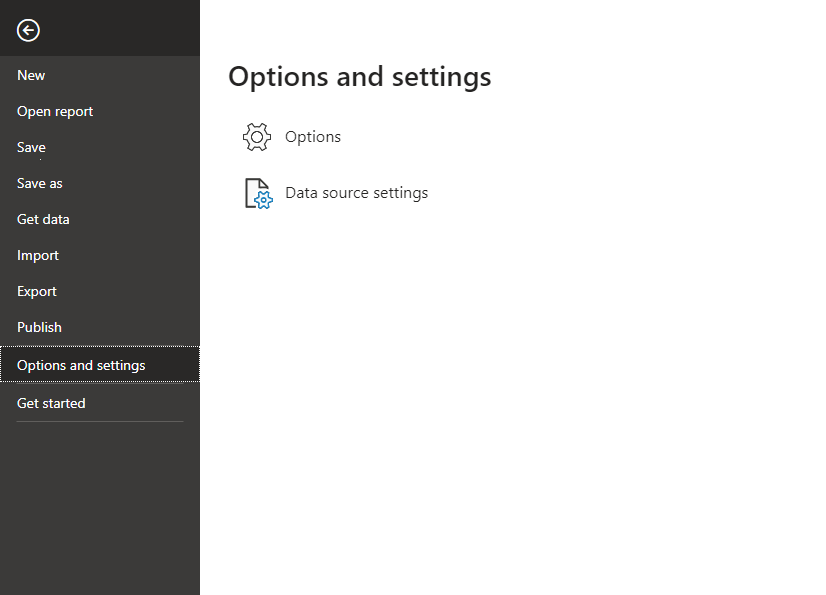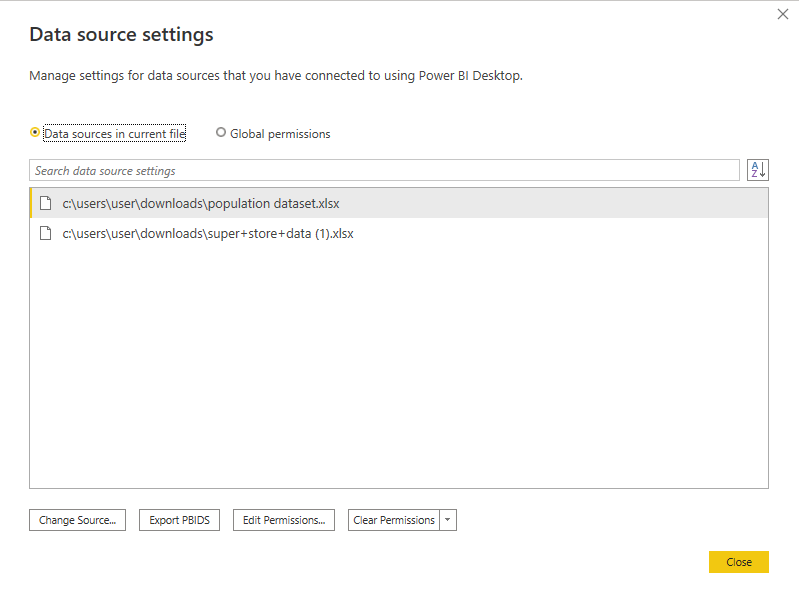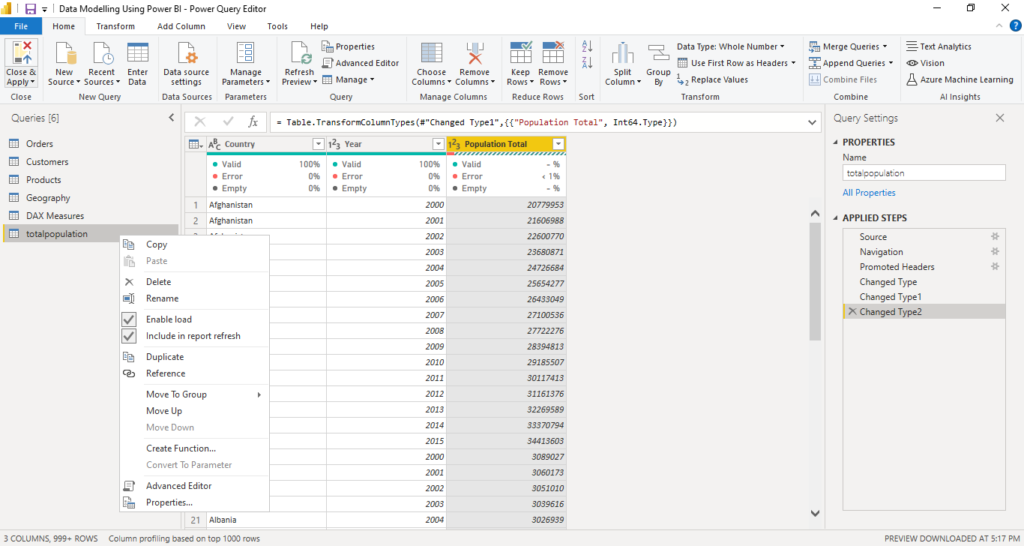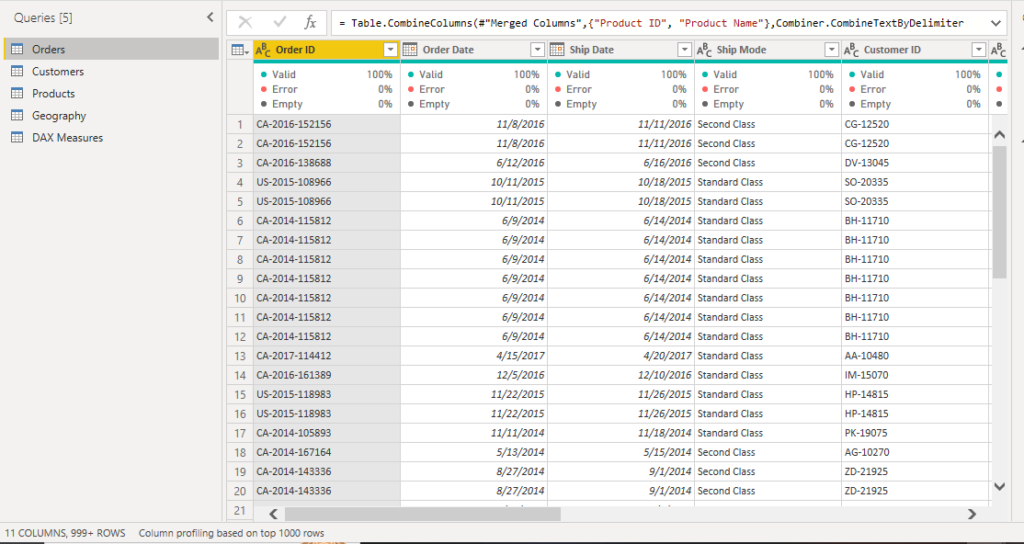Have you been working with Power BI Desktop and you wanted to remove an existing data source but couldn’t find a way around it? The good news is, removing it is not as hard as you think.
This article will explore how you can remove a data source from your Power BI report.
Read to learn more.
Introduction: How to Remove an Existing Data Source in Power BI
To remove your existing data source from the current report, you must manually delete the queries and tables connected to the data source. Consequently, this dataset will be removed from the Data Source Settings.
Here is how to do it:
Data Source Settings
To start with, check for the dataset you want to remove. And to check for the data, go to File, click on Options and Settings, and select Data Source Settings.

You will get a pop-up window for the Data source. This window contains your existing dataset, and you can remove or replace them
As displayed below, I have two datasets (super+store+data and population dataset) on my Power BI desktop.

Transform Data
Now, I want to remove the population dataset because I don’t need it anymore. To do that, you will delete the queries and tables connected to the data source in the power query editor.
To delete the queries, click on the dropdown in Transform Data and select Transform Data. This will take you to Power Query Editor.

In the Power Query Editor, click on the dataset you want to remove. Right-click and select Delete.

This process automatically removes the dataset from your Power BI (as shown below).

Afterward, go to the home tab, and refresh your Power BI. This will remove the existing data source from your report.
Conclusion: How to Remove Existing Data Sources in Power BI
Now, you just learned how to remove an existing data source in Power BI. To confirm that the data source has been removed, you can go to Data Source Settings (File >> Options and Settings >> Data Source Settings).
If it hasn’t been removed, you can go over this process again to delete the data in the Power Query Editor.
Thanks for reading.
